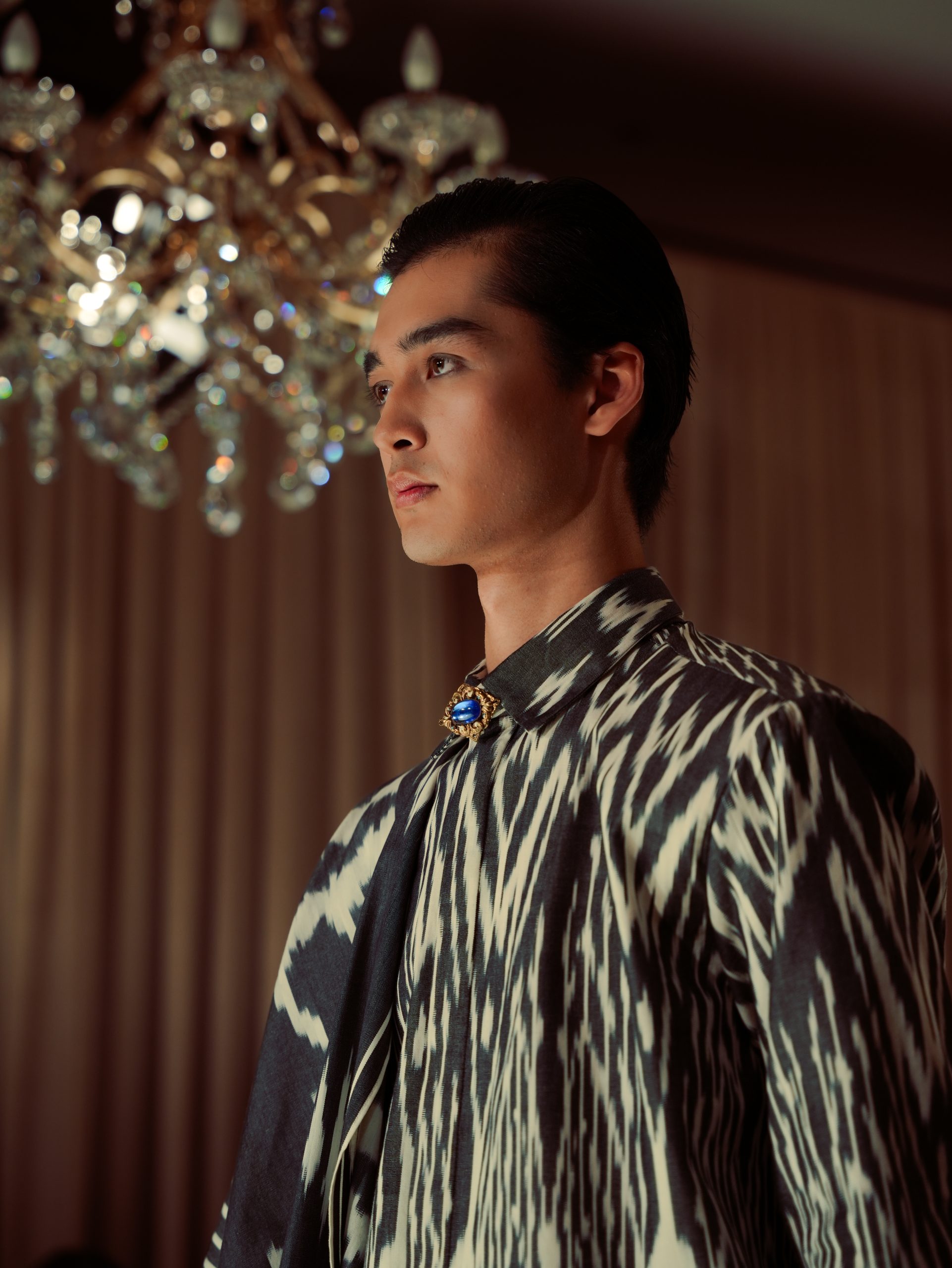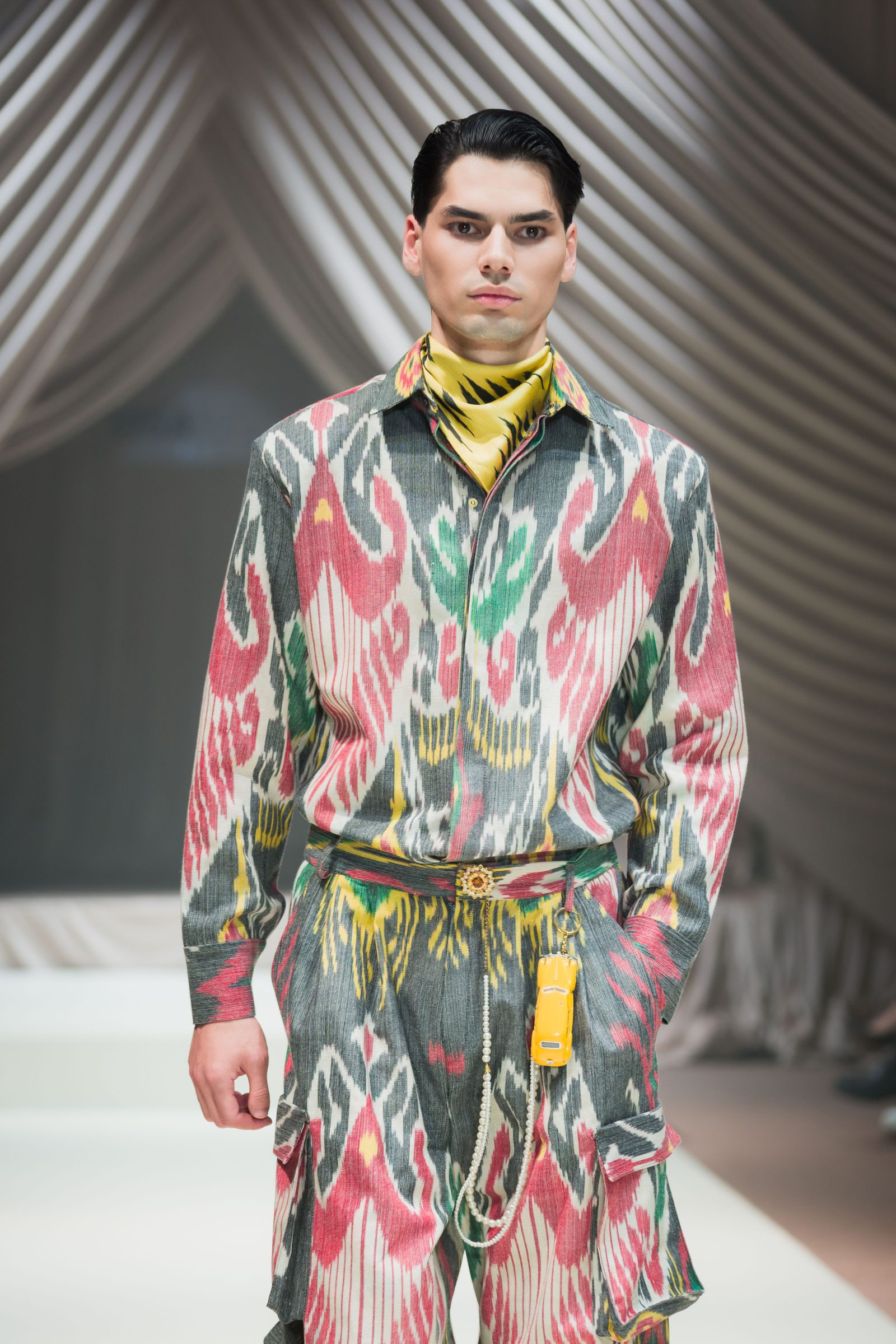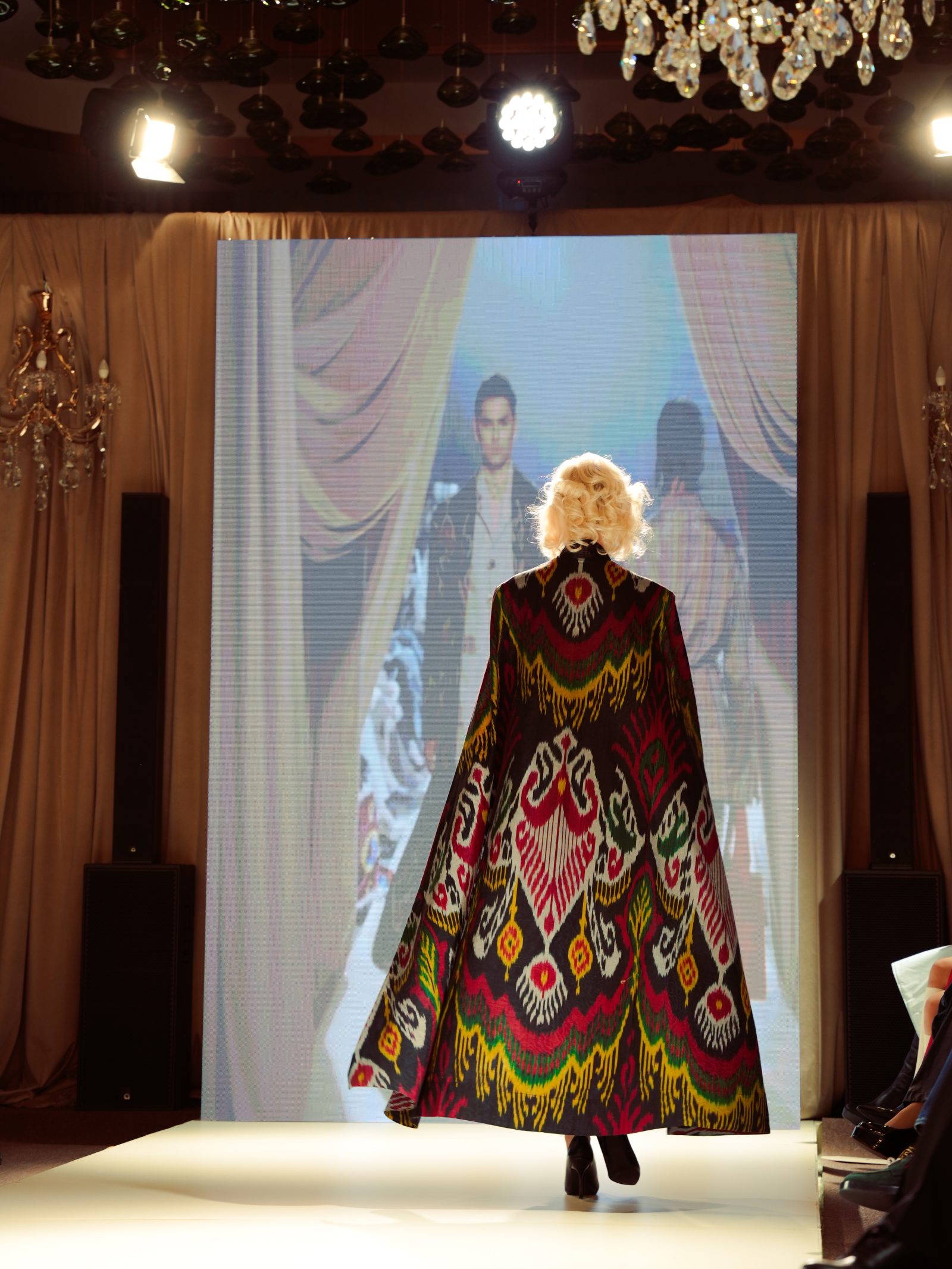Fashion
Silk Road Revival: Azukar Moreno Electrifies Tashkent Fashion Week

On Tashkent’s runways, centuries of textile heritage meets contemporary fashion, as Uzbekistan steps onto the global fashion stage
Traditional Uzbek fashion took on a contemporary twist at Tashkent Fashion Week as the dramatic Azukar Moreno show opened a frenetic schedule to the delight of a massive international audience. Set to The Weeknd’s song “Blinding Lights,” with models planted among the audience to stand up and perform dances midway through the show, this was a beautifully-produced spectacle that entertained, educated, and most importantly, demonstrated creative director Kamola Rustamova‘s mastery of tailoring and impeccable attention to detail.
Rustamova’s collection, which drew inspiration from both traditional local style and the most avant-garde sartorial movements, epitomized the palpable excitement around Tashkent Fashion Week as it launched its fourth season. Uzbekistan has a burgeoning fashion scene, a wealth of young talent, and a rich cultural heritage that matches that of any country in the world.
As the original center of the legendary Silk Road, the Central Asian state has long served as a locus of cross-cultural exchange—both of goods and knowledge—while cultivating its own unique traditions and architectural sensibilities. Bukhara and Samarkand are mystical names for many Westerners, conjuring up images of bygone epics encountered in films or history books. Yet they remain living and breathing cities in which the narrative of the new Uzbekistan, which gained independence just 34 years ago, is being written.
Uzbekistan is a country on the verge, informed by both its nomadic past and its time in the Russian then Soviet empires as it carves a distinct new national identity. At this Tashkent Fashion Week, it was again a center of cross-cultural exchange. Industry luminaries from such countries as Britain, France, Japan, Russia, Ukraine and the United States gathered in the Uzbek capital, many for the first time, to discover a series of tremendously talented designers with the ability, if given the proper platform, to become true global powerhouses.
As Martyn Roberts, founder of UK-based Fashion Scouts, said at a panel to open the week, “we’re looking for people who have a story to tell.” There is no shortage of compelling stories to tell in Tashkent. Due to her unique synthesis of tradition with modernity, Rustamova’s, for those unfamiliar with Uzbek fashion, is the foundational one.
The signature of Azukar Moreno is incorporating traditional ikat fabrics into contemporary designs. Generally made from silk or cotton, ikat is hand-dyed in vivid patterns and woven on a particular type of handloom. The result is a cornucopia of garments which ranges from abayas to shirts to long buttoned robes.

Ikat has a flair for the dramatic. The electric blues, greens, and oranges, often in mesmerizing weaves and including cultural motifs such as the pomegranate, recall the exquisite tile work present on the mosques, madrasas, and monuments of Uzbekistan’s old cities. Yet Rustamova uses them not just to honor history but also with an eye towards the future.
“We try to avoid synthetic industrial fabrics; we mainly use our traditional designs (hand-woven), original designs, or vintage fabric,” she explained. Sustainability is a major pillar of the brand. With the motto, “fashion and ecology can live in harmony; everything is in our hands and awareness,” Rustamova has pioneered eco-awareness in Uzbek fashion. This goes hand-in-hand with her goal of creating quality long-lasting products for her customers. “If the fabric is strong, it will not deteriorate. The consumer will not throw it away and fill the trash bin, but will prefer to create a new product with it.”

Rustamova, who generally emphasizes menswear in her collections, opened her recent show with a man wearing a flamboyant ikat robe that fanned out behind an understated shirt and pant set. The look referenced many cultural motifs in dramatic shades of red, yellow, and green. It foreshadowed many of the best pieces from the collection, as ikat blazers, pants, and oversized shawls dominated the runway. On the women’s side, a “Schiaparelli pink” dress, black dress with ikat shawl, and navy graphic dress (each worn with a high-waisted belt in a reference to traditional Uzbek fashion), delighted in their masterful cuts and self-assured silhouettes.

Towards the end of the show, after the planted models had already stood from the audience to add dynamism to the event, a model in a short ikat dress, towering black boots, and chic sunglasses appeared on the runway with a phone in hand.
Quoting the music video for “Blinding Lights,” she spoke into the phone, “hey, it’s me. I know it’s been a while, but I was just thinking about you…and I’m sorry about everything. I miss you.” Hanging up and slamming the phone to the floor with dramatic emphasis as she began her strut down the catwalk, she displayed the charisma characteristic of Rustamova and added an exclamation point to what had already been an outstanding collection. A proverbial, and literal, mic drop, her message was heard loud and clear. Uzbek fashion is ready for the global stage.







